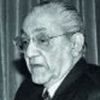Is Modi the true saviour of Muslim sisters?

Ever since the Jan Sangh was set up in 1951, one of its main aims was to wipe out Muslim law and enforce a uniform civil code. After its reincarnation in 1980 as the BJP, this demand became one of its emblems.
Once he became Prime Minister, Narendra Modi made Muslim personal law embodied in the Sharia a target of his campaign. He picked on the one feature that many Muslims themselves were moving towards reforming because they saw it as contrary to religious injunctions — the triple talaq.
Last year, Mr Modi said, “Getting Muslim women their rights as per the Constitution is the responsibility of the government and society,” moaning, “what is the crime of my Muslim sisters when someone says talaq thrice over the phone and her life is destroyed?”
As far back as December 1995, the leftist All India Democratic Women’s Association stated, “This convention condemns the propaganda of the BJP for an immediate uniform civil code which is directed against the Muslim community. It protests against its hypocritical claim that it is motivated by concern for women’s rights, in this case, Muslim women. It is this very political platform which in its earlier incarnation as the Hindu Mahasabha and the Jana Sangh had led the Opposition to any reform in Hindu laws, leading to an opportunist compromise at the cost of women’s equality.”
Speaking in the Central Legislative Assembly in 1925, Quaid-i-Azam Mohammad Ali Jinnah said, “I have no hesitation in saying that the Privy Council have on several occasions absolutely murdered Hindu law and slaughtered (Muslim) law.” He himself had won his spurs in public life by securing the passage of the Mussalman Waqf Validation Act, 1913, which nullified a Privy Council ruling in 1894 on waqf-alul-awlads that would have ruined many Muslim families.
In 1897, the Privy Council made it clear that it preferred commentaries of doubtful accuracy to the Quranic text. It chose to rely on the dicta in the Hedaya, translated by Hamilton, and N.E. Baillie’s Digest of Muhammadan Law. Two of the greatest Muslim judges, Justices Ameer Ali and Syed Mahmud (son of Sir Syed Ahmad Khan) had exposed the errors in the translations.
After Independence, Pakistan’s Supreme Court discarded this legacy. It ruled that it was the duty of the courts to ascertain the law from the Quran and the hadith for themselves in preference to the opinions of British-era commentators.
But Muslims of India did not shed the sham doctrines of the Privy Council. Some high courts’ judges departed from the beaten path and believed that the existing Muslim law on divorce had no sanction in the Quran.
The Quran enjoins a clear procedure. The first step is appointment of arbiters “if you fear a breach” between the couple. Failing their efforts, either side can demand divorce; khula by the wife and talaq by the husband, for which a period of three months (iddah) is obligatory. It is revocable before that.
In 1943, Maulana Abul Ala Maududi said, “Due to want of knowledge, Muslims have been generally given to understand that a talaq can be pronounced only through the triple-divorce formula, although it is an innovation and a sin leading to many legal complications. If people knew that triple divorce is superfluous and even a single talaq would dissolve the marriage, of course, leaving room for revocation during the next three months (iddah) and remarriage thereafter, innumerable families could have been saved from disruption.”
Section 7 of the Pakistan’s Muslim Family Laws Ordinance, 1961 establishes an arbitration council, and mandates conciliation and a 90-day interim before a divorce is affected. Sadly, the organisations that profess to represent India’s Muslims on this issue studiously ignore this law — and thus play into the hands of the BJP, defying Muslim women’s bodies that are committed to the Sharia but that want the triple talaq to go.
By arrangement with Dawn

